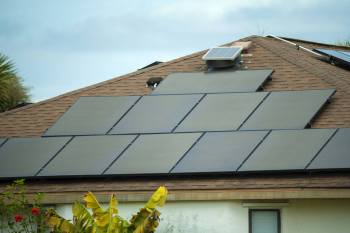As global temperatures rise and summer crowds surge, a crisis is playing out along America's coasts. Nesting shorebirds are being squeezed out of their habitat by a growing tangle of threats — and human activity is at the center of it.
What's happening?
The State of the Birds 2025 report, compiled by a coalition of conservation and science groups, issued a stark warning: A third of U.S. bird species are in decline. Nearly 80 species have lost more than half their populations in the last 50 years and are still shrinking, as reported by StarNews Online.
"Birds tell us that we have a full-on emergency across all habitats," said Marshall Johnson, chief conservation officer at the National Audubon Society, in a release.
Among the hardest hit are shorebirds, which have seen a 33% population drop since 1980. This comes from loss of beach habitat from oceanfront development, rising sea levels, stronger storms, extreme heat, and predation — all compounding the risks they face during nesting and roosting seasons. Add to that surging beach crowds during the summertime, and things can get even worse.
"In many cases they're competing for the same habitat as people, so that can be very difficult," said Lindsay Addison, a coastal biologist with Audubon North Carolina.
Why are bird populations important?
Birds aren't just picturesque beach companions; they're ecosystem engineers. Their decline points to a broader environmental imbalance. When shorebirds vanish, insect populations explode unchecked, fish stocks shift, and coastal vegetation loses a key ally in seed dispersal (important for our food supply). Entire ecosystems — and the communities that rely on them — feel the damage.
Shorebird habitats can also serve as buffers against storm surges and flooding. Losing them to development or erosion removes natural protections that help keep coastal cities safe during extreme weather events.
What can we do to protect shorebird populations?
Despite these numbers, there's hope. Volunteer bird steward programs — such as one at Wrightsville Beach with nearly 80 local ambassadors — play a key role in protecting nesting areas. Signs, barriers, and even student-drawn illustrations encourage beachgoers to respect these natural spaces.
Many governments have also designated protected zones for nesting and roosting sites. Conservation efforts have also seen promising comebacks of bird populations, including the American oystercatcher.
But advocates say education is just as important. Simple actions — such as giving birds a wide berth and not chasing them — can help more fledglings survive. So next time you head to the shore, respect wildlife signs and keep pets away from nesting zones. And if you come across any unusual or distressed birds, report them to local wildlife officials.
|
Do you worry about air pollution in your town? Click your choice to see results and speak your mind. |
Join our free newsletter for good news and useful tips, and don't miss this cool list of easy ways to help yourself while helping the planet.














